

|
A friend just ran out of space on his hard drive and asked advice about what to delete. His primary computer is an older laptop with a smaller hard drive, so he may need another external drive, but let's discuss how to explore what's on your computer and what your options are. There may be unnecessary or unused system files and programs which are taking up a huge amount of space. Typically, I see people trying to cleanup their system by deleting old documents and e-mail, but this is basically a waste of time. Relatively, compared with everything else, they take up almost no space. When you're running out of space, you need to go after the really big things first. Your hard drive contains just two kinds of stuff:
When it comes to system stuff, big gains can potentially be found by running "Disk Cleanup" and by un-installing programs that you will never use. When it comes to your data, the really big things are videos, next come images (especially if you have a very high resolution camera), and music. We'll come back and explore your data in a bit, first let's cleanup all the "system stuff". With Vista, the easiest way to find "Disk Cleanup" is to just type the first few letters of the word "clean" where it says "Start Search" in the box that appears just above the "Windows Logo" button when you press it:
As you start typing, things starting with those letters appear above where you're typing. Program names appear at the top:
With XP, I found "System Cleanup" under Accessories / System Tools: |
Sponsored Advertisements:
Sponsored Advertisements: |

First Disk Cleanup will ask you which drive; choose your C drive from the pull-down:

(These screen shots are from an XP machine, the ones from Vista machine are basically the same, except for some of the choices. Some of the different Vista choices are shown further down this page.) It may take a minute or two decide your options and the savings from each:
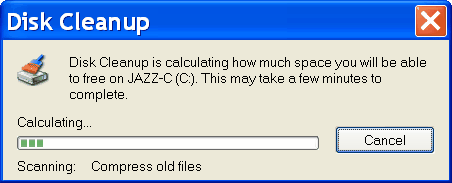
Before doing anything review all the options, it will have checked some, but don't assume those are the correct choices for you. As you highlight each option, it will describe what it's going to delete (red arrow):
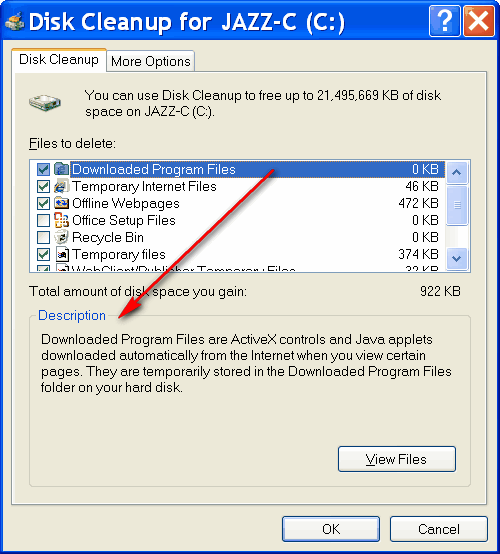
The descriptions are various options on this XP machine follow:
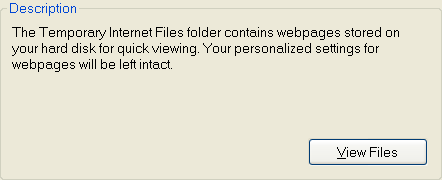

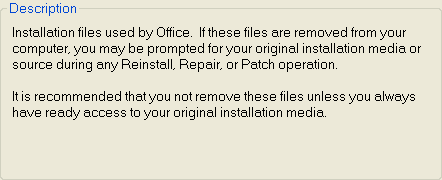
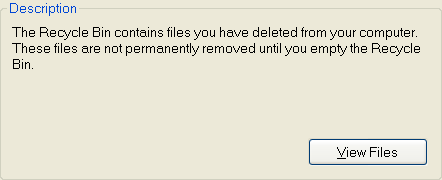

I would probably check all the options above except the first (downloaded program files). The tiny savings from deleting these programs is probably not worth the time it takes to re-download them on a dial-up line. If you have a high-speed connection go ahead and delete them.
Be sure to scroll down and look at the rest of the list:

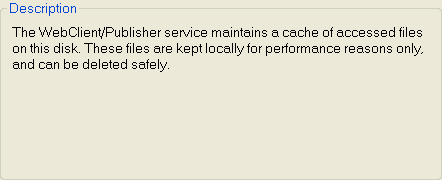
I would probably delete the webclient file (above), but I personally I wouldn't compress files. I might delete the catalog files, just to allow it to start fresh.
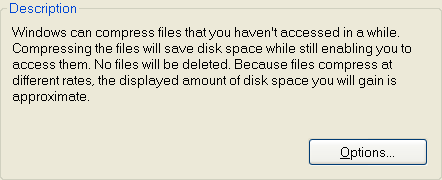
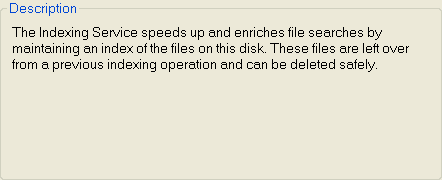
The potential savings seen on the system in these screen shots is almost nothing. It's measured in KB which means it's less than a mega-byte. You're really need to save at least 100's of MBs, or hopefully even GBs (one giga-byte equals 1,000 mega-bytes).
Even if the savings isn't that great, be sure to click the OK button to actually delete the files. Also be sure take a look at the "More Options" tab, but before doing let's look at some of the different options you might see on a Vista machine and their descriptions:



I would never delete the hibernation file on a laptop; maybe on a desktop that has been setup to never hibernate. Description:
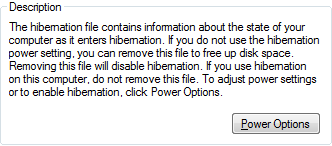
I see no reason not to delete the Setup Log Files:

It's probably not worth deleting thumbnails, but if you do they'll get re-created:
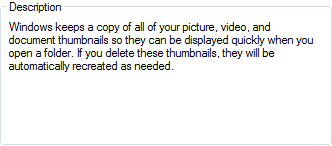
And unless you're having trouble, I would go ahead and delete all the various error reports, which all have the same description:
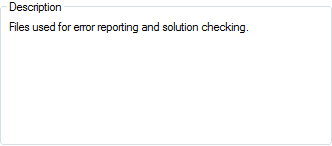
Now let's look at the "More Options" tab of Disk Cleanup, this is the one from XP:
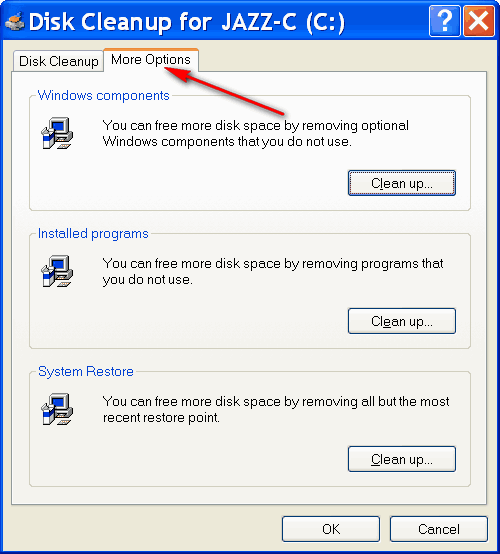
I never bother to get rid of Windows components because the savings is probably not that great and you may want whatever you remove someday (when someone explains what it is good for ![]() ).
).
The "More Options" tab in Vista looks different, but the options are really the same as the last two above:
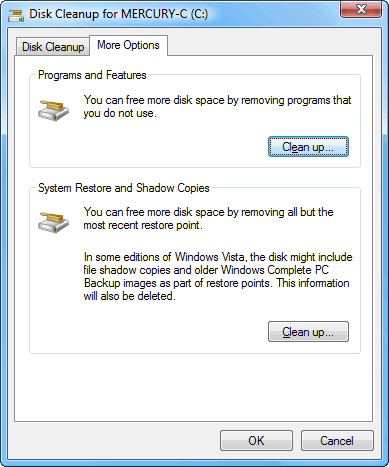
The first option is the same thing you've probably visited from the Control Panel. In XP it was called "Add/Remove Programs", in Vista it's called "Programs and Features". If you bought a standard machine (as opposed to a custom built one) it probably came with all kinds of junk you'll never use pre-installed. Removing this junk can probably save you one or two GIGA-bytes and might even make your system run faster. You can either go through the list alphabetically, or you can sort it by size. In XP there's a pull-down:

In Vista, click on the header to the Size column to sort (red arrow):
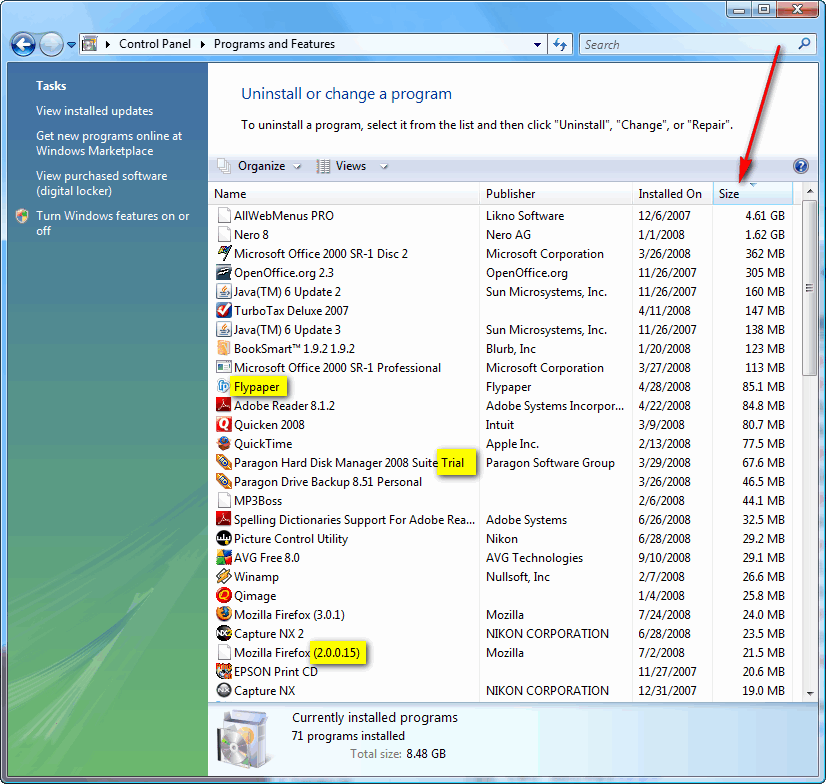
This was a custom built machine, but I still see three programs (yellow highlights) that should be deleted. Flypaper was a website building application I tested out but never really used. Paragon Disk Manager is a trial version which probably no longer works (30-day trial). And there seem to be two versions of Firefox ... the old version can be removed.
If you're interested in some of the things I usually remove on a new machine, see New Computer Setup.
The last choice under "Other Options" in Disk Cleanup is removing restore points. This may be a good way to quickly regain many, many GBs of space, but should only be used as a temporary solution. You want to be sure your C drive always has lots of free space allowing many, many check-points to be created. I've previously discussed System Protection and Deleting Shadow Copies, see the complete details on that page.
When it comes to your data, you'll find it fits in these basic categories.
For most of us, the "Everything Else" category is small compared to Videos, Images and Music. There's very little payoff for spending too much time deleting that kind of "Stuff".
The first thing to do is find it all and get a sense of how much you have. Unless you've moved it like I've recommended on other websites, on an XP machine, much of your stuff will be under "Documents and Settings", on a Vista machine under "Users". First look to see how much is there in total. On an XP machine I right-click on "Documents and Settings" and saw:
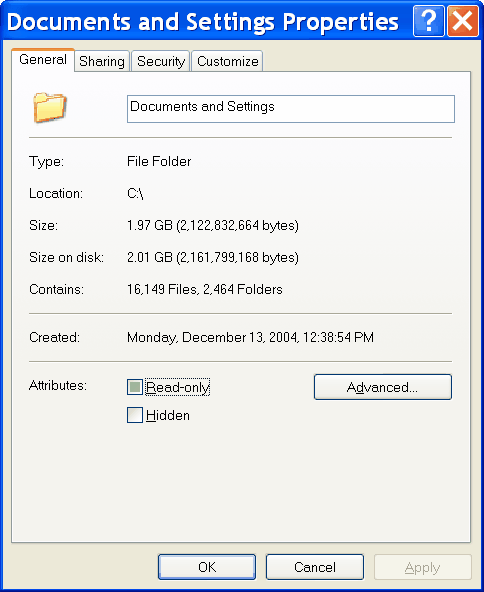
Since on this particular machine everything including Music, Images and even the "My Documents" tree has been moved elsewhere so this might be a good place to gain maybe a gigabyte. We could come back later and drill-down to see what all is there.
One thing I like to do is get an overview of where everything is hiding on a machine, and then drill down into any top level folders that are really big (contain LOTS of gigabytes). Here's a good place to use Calc, the spreadsheet program that comes with Open Office and works like Excel. First we open Explorer (click on Computer in Vista, My Computer in XP) and go to the C drive. On a machine that hasn't really been used we see:
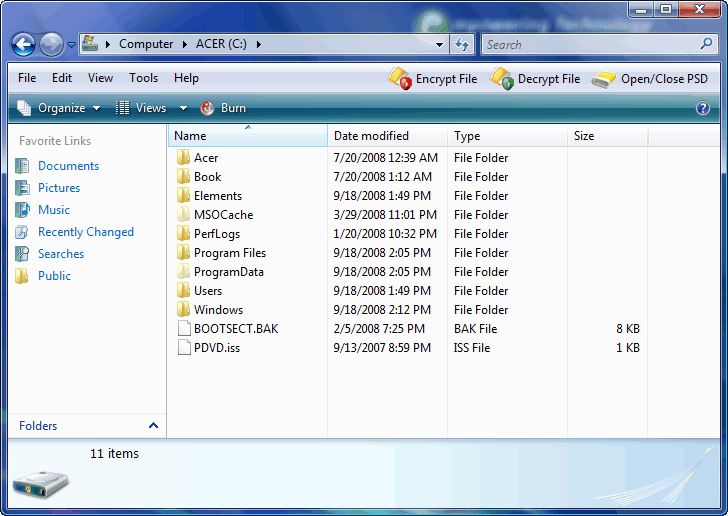
Then we right-click on EACH of the folders and choose properties. We would see if we right-clicked on the "Program Files" folder:
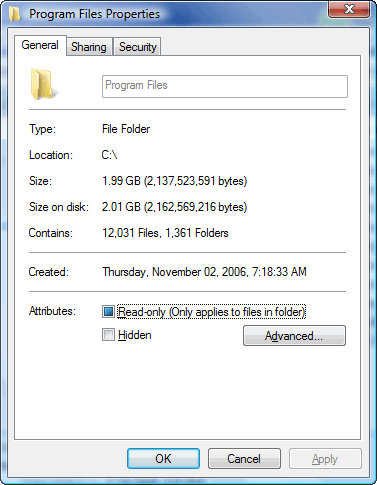
And doing the same for all the other folders:

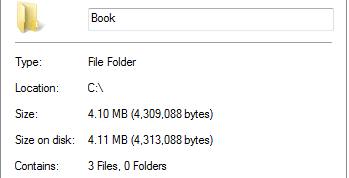

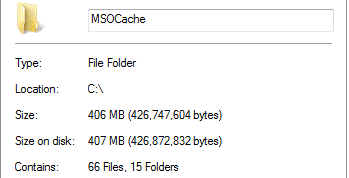
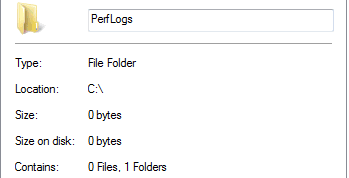
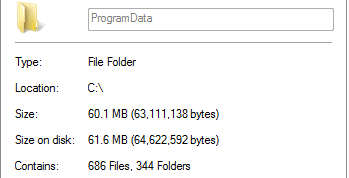


I entered these numbers in my spreadsheet (I used one column for megabytes and one for gigabytes, so I didn't have to convert anything except the total ... I could add each column separately without mixing megas and gigas):
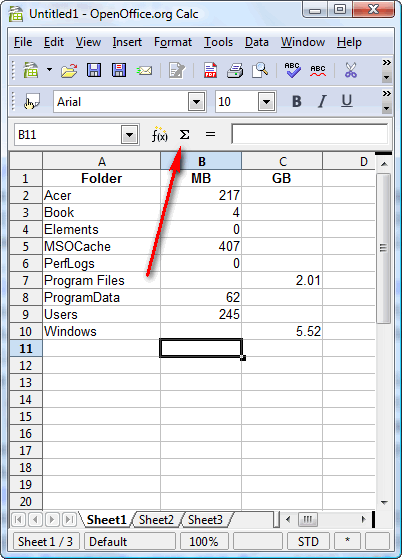
To sum a column, I put clicked in the cell where I wanted the total to go (B11) and clicked on the Sigma (arrow above); if the Sigma isn't there click on the fx to the left of the arrow and it should reappear (or you can choose SUM from the list).
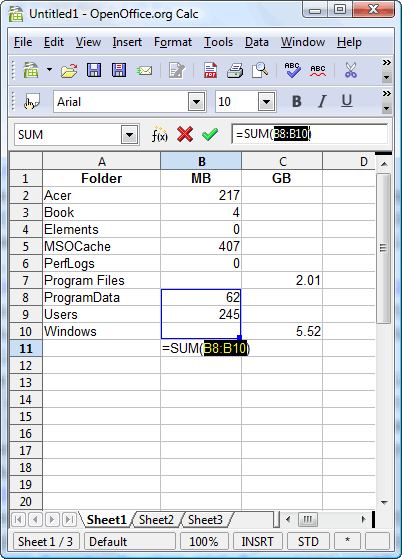
It guess which cells you want to sum and puts a blue box around them. You can either drag the box around and re-shape it, or you can type the range in (arrow below) ... I just changed B8 to B2. When you press Enter, or move to another cell the sum will appear.
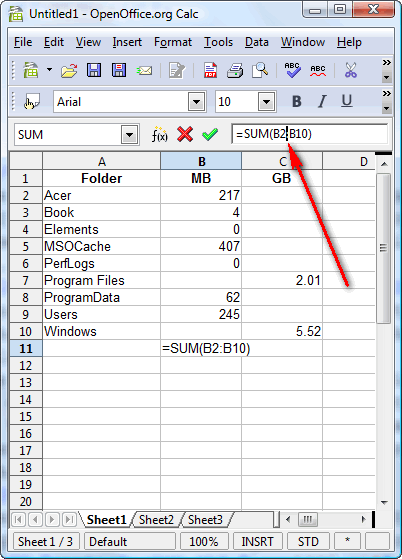
I could then either fill right or repeat the procedure to sum the next column. Here I click Sigma again:
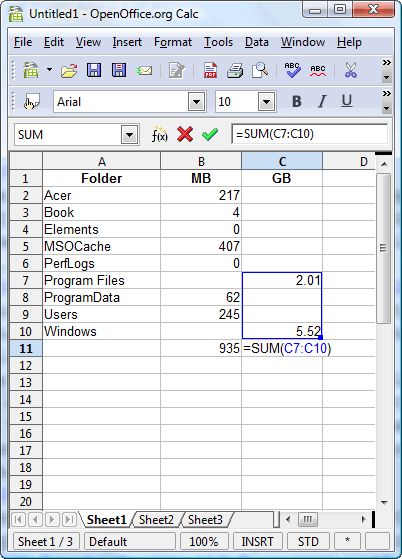
And then moved and streached the blue box:
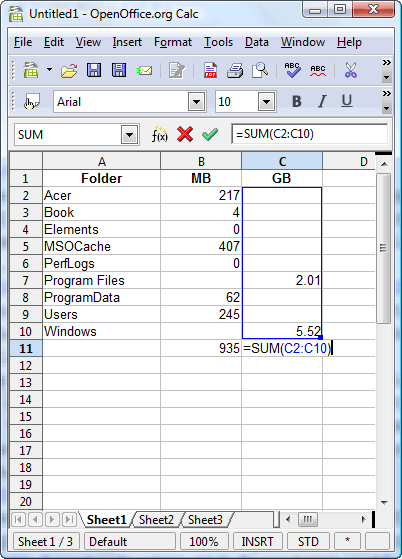
If you're not use to using spreadsheets, don't be afraid. They're easy to use, give Calc a try. Anyway what we see below is that the contents of all the folders adds up to about 8.5GB (935MB is less than a gigabyte, roughly 0.9GBs):
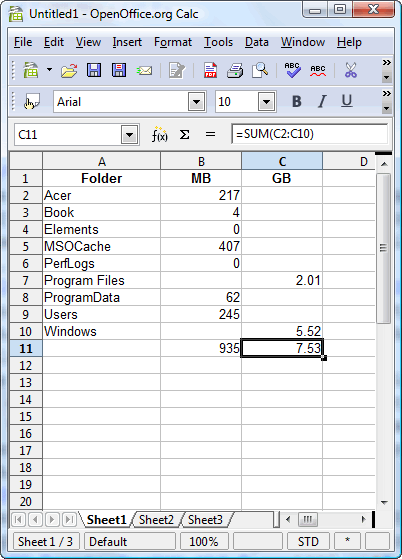
You would think this matches the amount of space used on the C drive, but it doesn't:
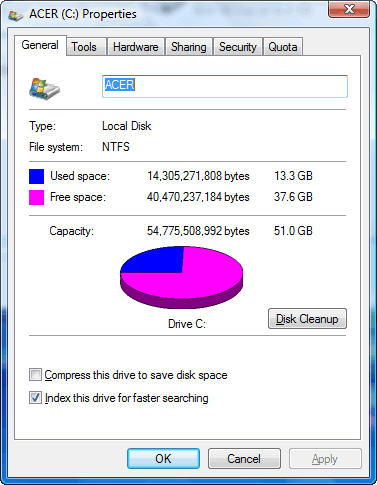
Almost 5GB of the 13.3GB in use on drive C is unaccounted for. It's basically in three places:
None of these, except the shadow files, grows much bigger so they shouldn't be a problem.
On my machine I have split my images into multiple folders, on different drives. My strategy is to break them up based on how and where I want to back them up. For example, I have a folder called "_Albums" which I keep on EVERY machine ... it's just favorite Albums that I always want to have with me, even on my laptop which doesn't have that much space. I have another Albums folder that basically just has original images, it's on drive E and if I right-click and choose properties:
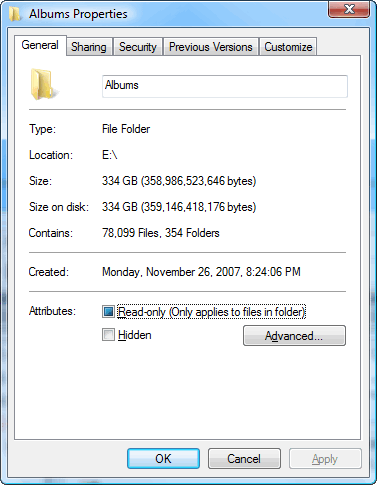
As you can see it contains 78,000 files totalling 334 GB, but there's probably little or nothing there I want to delete. Extra 500GB internal drives are $65 today, external ones $90. If you've done a reasonable job of keeping things organized and don't have multiple copies of the same huge folder on a single drive, it's not worth trying to do much cleanup, just buy another drive (or probably two more since you need someplace to backup the new drive). When it comes to Images and Music, I use SyncToy (see Using SyncToy) to keep a current copy on another drive (network or external) because neither will compress much more so they're no real advantage is using some kind of backup program that compresses your data.
When I talk about drilling down, let's say I'm looking at my D drive:
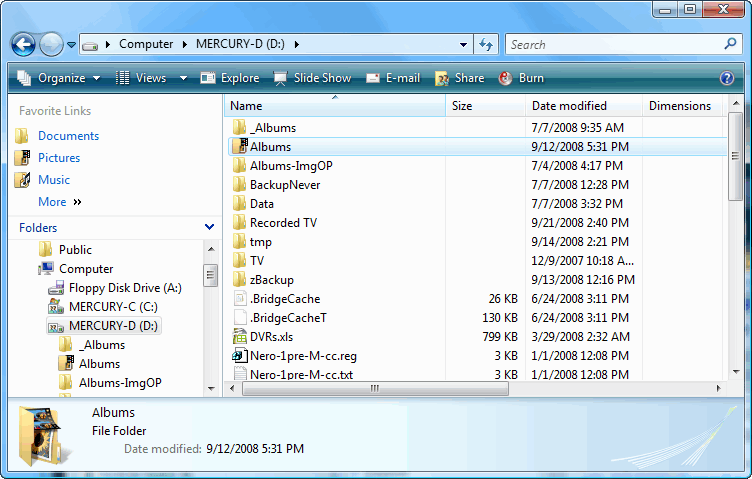
I right-click on the "Data" folder, choose properties and see:
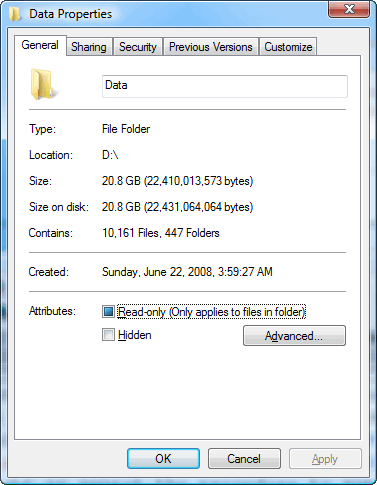
20GB is quite a bit, let's look in there:
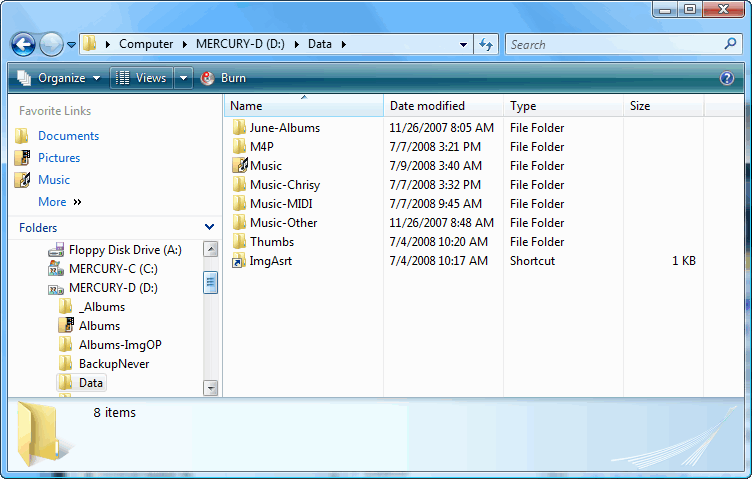
You can check the properties of each, or in Vista you can even just hover over the folder name and Vista will add up what's inside:


Sometimes when you hover over a folder and it's taking too long to add everything up, it will say something like: more than ___ GB. When you see that, right-click and choose properties to calculate the actual total.
As we see most of the space (18.9 GB out of 20.8 GB) is taken up by the Music folder, which is not something I want to delete. Anyway, that's the process of drilling down; just go after the big stuff initially. Someday when you have more time you can cleanup smaller folders.
And when you find there's nothing much to delete, buy another drive or two. The cooling in most external drives isn't as internal drives in a tower with good fans, so be sure they're spinning down if not used for longer periods of time. If they're really backup drives I disconnect them (both power and USB connections) so there is no chance of their being damaged by lighting, viruses, etc.
Also think about off-site storage in case of fire, hurricane, etc. In the past, with 3 copies of DVDs containing original images, I left one set in Maine, one set in Florida, and moved one back and forth. Now that I'm using just hard drives for backup, another worry is having everything stolen during the trip. I'm going to leave current backups (ones made shortly before leaving) in both places ... the next year I can put new backups on the drive I left behind the previous year. If disaster should strike at either end, or on the road, I'm still covered. You need a disaster protection plan that works for you. Most of my video isn't worth backing up; I've been making two DVDs and keep one set in Florida and one in Maine. I then delete the copy on my hard drive ... the reason I make DVDs (even though I know they don't last as long) is that I can play them in my DVD player.
Suggested next choices: